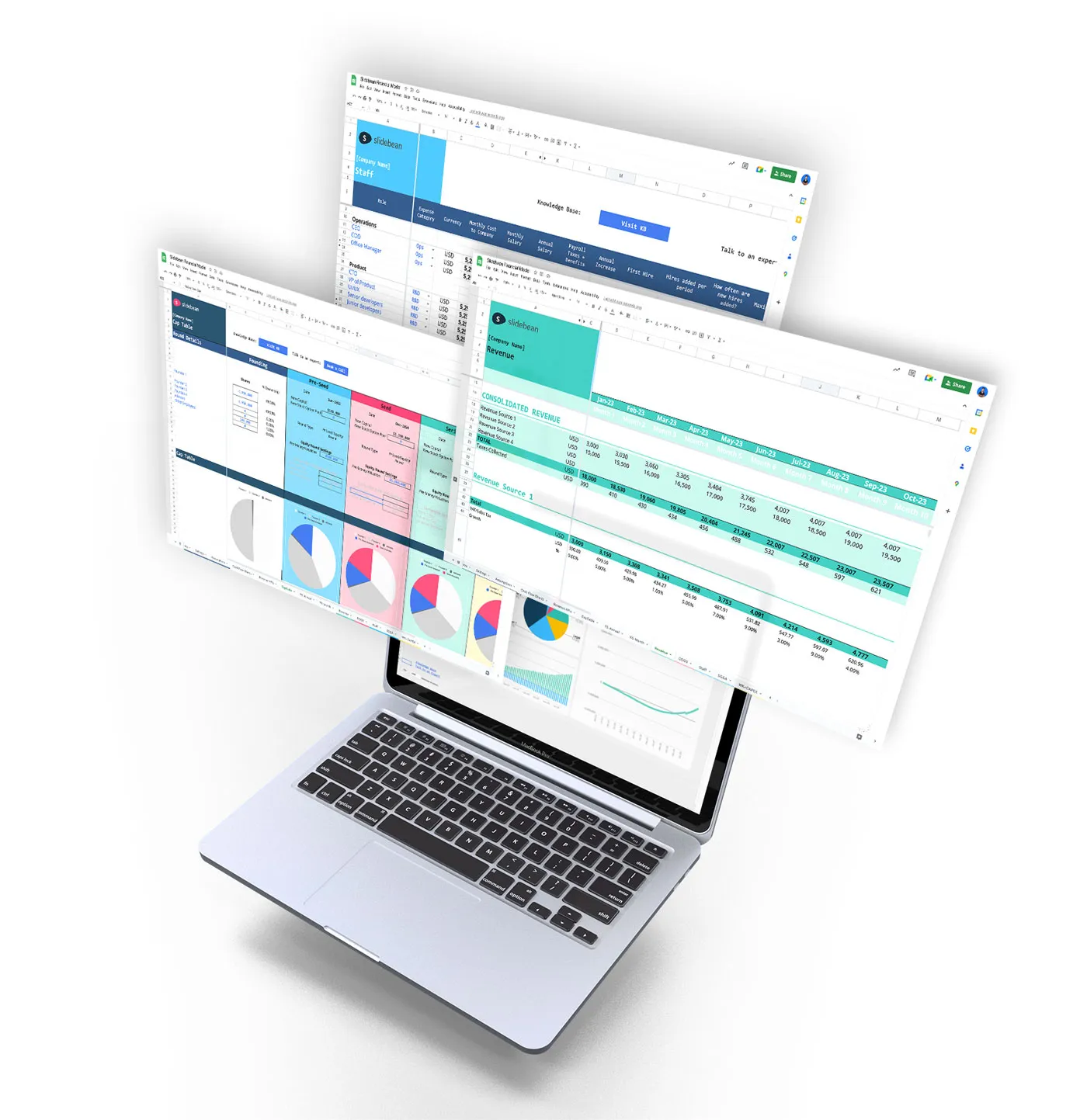A financial modeling bootcamp
for startup founders
When you're done, you'll be able to...




Try a sample financial model built by our team
Create your model after registering
Bootcamp Agenda
(Optional) Day 0: Leveling up our spreadsheet skills
This module is designed as a leveling course for founders and entrepreneurs who are new to spreadsheet tools like Microsoft Excel and Google Sheets. It starts with the basic building blocks of formula-building, and advances into reference functions like INDEX+MATCH.
We focus on the tools that you'll need to connect most financial models.
Agenda:
- Setting up a basic spreadsheet: creating and formatting a worksheet, entering data
- Common math functions (e.g. SUM, AVERAGE, MAX, MIN)
- Date and time functions (e.g. TODAY, NETWORKDAYS)
- Using lookup and reference functions (e.g. VLOOKUP, INDEX, MATCH)
- Using logical functions (e.g. IF, AND, OR)
- Collaborating with others and using version control
- Formatting and presentation tips
- Sorting and filtering data
- Consolidating data from multiple worksheets
Day 1: Why do I need Financial Modeling?
Driver-based modeling is the single most important lesson we will be teaching in this bootcamp. This module is the key to unlocking your understanding of financial models and will allow you to dissect and break down any type of business into parts that you can model on a spreadsheet.
Curriculum:
- What is driver-based modeling, and why is it important for startups?
- Common direct and indirect drivers of startup growth
- The KPIs to convert drivers into revenue
- Simple model maps: SaaS, eCommerce, and Traffic-based business models
- Adding conversion funnels
- Advanced model maps: Marketplaces and virality
- Converting maps into variables
- Homework assignment before our Live Session
Day 2: Building your Financial Model
Now that we understand the basics of how financial models work, we’ll get to building our first formulas to connect the maps that we’ve been working on.
Curriculum:
- Setting up the layout: inputs vs outcome spreadsheets
- Standardizing our format: variables vs formula results
- Our first formula: a marketing budget
- Scaling linearly vs exponentially
- Defining launch dates
- Our first complete map: from driver to costs
Day 3: Understanding the Template
We’ve built our first financial model, but we need a better canvas to work on if we want to scale the spreadsheet. We’ll walk you through the (free) template our team built, and that over 20,000 startups have used as a starting point.
Curriculum:
- The basics: SG&A, COGS and Revenue
- Advanced sheets: CAPEX
- Understanding VAT and Sales Taxes vs Income Taxes
- Managing headcount and staff scaling
- Advanced sheets: Cap Table
Day 4: Your Custom Building
With a superpowered canvas to work from, we now move into connecting a complete model map inside an existing financial model template.
Curriculum:
- Build a realistic budget, focusing on salaries and hiring plans
- Plan for a pre-seed round to start operations and adjust the team size to fit funding
- Manage costs, cut unnecessary hires, reduce salaries, and scale marketing gradually to stretch the budget
- Project growth and revenue to determine when to raise rounds
- Use financial models to test different scenarios for sustainability and investor expectations
Day 5: Running Scenarios and Projections
At this point we have a fully functional financial model we can use to estimate anything we want. It’s now time to put it to good use to answer the questions a founder needs to solve before pitching investors.
Curriculum:
- Building a dropdown scenario picker
- Determining if the business is scalable (and/or venture-backable)
- Budgeting an investment round: expenses and milestones
- Building a simple dashboard with charts and KPIs


